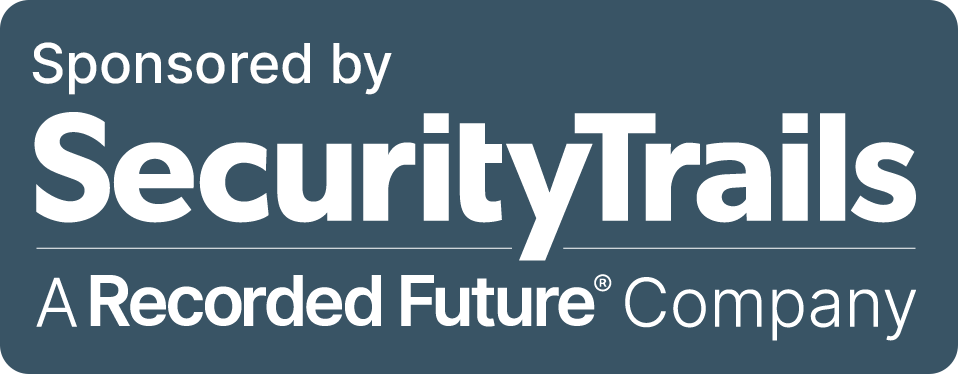www.census.gov
Open in
urlscan Pro
2600:1400:11:1b8::208c
Public Scan
Submitted URL: https://lnks.gd/l/eyJhbGciOiJIUzI1NiJ9.eyJidWxsZXRpbl9saW5rX2lkIjoxMDYsInVyaSI6ImJwMjpjbGljayIsImJ1bGxldGluX2lkI...
Effective URL: https://www.census.gov/library/stories/2022/07/teachers-among-most-educated-yet-pay-lags.html?utm_campaign=20220902rcsu...
Submission: On September 02 via api from US — Scanned from DE
Effective URL: https://www.census.gov/library/stories/2022/07/teachers-among-most-educated-yet-pay-lags.html?utm_campaign=20220902rcsu...
Submission: On September 02 via api from US — Scanned from DE
Form analysis 3 forms found in the DOM
GET https://www.census.gov/search-results.html?searchType=web&cssp=SERP&q=
<form id="data-uscb-header-search-form" class="uscb-header-search-input-container uscb-layout-row uscb-layout-align-center-center" accept-charset="utf-8" action="https://www.census.gov/search-results.html?searchType=web&cssp=SERP&q="
method="GET">
<input type="text" id="data-uscb-header-input" name="q" class="uscb-header-input" placeholder="Search" tabindex="0" aria-label="Search" onfocus="CensusSearchTypeahead.onSearchFocusBlur(true)" autocomplete="off">
<input type="hidden" name="page" value="1">
<input type="hidden" name="stateGeo" value="none">
<input type="hidden" name="searchtype" value="web">
<input type="hidden" name="cssp" value="SERP">
<input type="hidden" name="_charset_" value="UTF-8">
<button type="button" class="data-uscb-header-search-input-button uscb-header-search-input-button-close uscb-transparent-button o-close-1" style="display: none;" tabindex="0" aria-label="Clear" onclick="CensusSearchTypeahead.onSearchCloseClick()">
</button>
<button type="button" class="data-uscb-header-search-input-button uscb-header-search-input-button-search uscb-primary-button" style="display: none;" tabindex="0" onclick="CensusSearchTypeahead.onSearchButtonClick()"> Search </button>
</form>Name: rtform — POST
<form id="rtform" method="post" name="rtform">
<textarea id="RatingTool_textarea" name="message" placeholder="Tell us more." maxlength="255" tabindex="0"></textarea>
<input id="RatingToolSubmit" type="submit" value="SUBMIT" tabindex="0">
</form>POST https://public.govdelivery.com/accounts/USCENSUS/subscribers/qualify
<form class="uscb-footer-subscribe uscb-layout-row-gt-md uscb-layout-column-md" action="https://public.govdelivery.com/accounts/USCENSUS/subscribers/qualify" id="GD-snippet-form" accept-charset="UTF-8" method="post">
<input name="utf8" type="hidden" value="✓">
<input type="hidden" name="authenticity_token" value="WYkERiwcsm2ugfWSCfiSQ0OmAlB/zVOCOSgu7FQDJa+Cbnzn5e83Uu0iBbn4c/ZxEDU3NGLA/ImfovWnn9OlYg==">
<input type="hidden" name="subscription_type" id="subscription_type" value="email">
<label for="email" class="ui-helper-hidden-accessible">Enter your email address</label>
<input required="" type="email" name="email" id="email" placeholder="Enter your email address" aria-label="Enter your email address" contenteditable="true" style="width: 100% !important;">
<button class="uscb-primary-button" name="commit" onclick="buttonClick(this, 'Email Subscription Button', 'Body/Footer');" contenteditable="false" style="min-width: 105px;" value="Subscribe"> Subscribe </button>
</form>Text Content
Skip Header An official website of the United States government Here’s how you know Here’s how you know Official websites use .gov A .gov website belongs to an official government organization in the United States. Secure .gov websites use HTTPS A lock ( Lock A locked padlock ) or https:// means you’ve safely connected to the .gov website. Share sensitive information only on official, secure websites. CLOSE -------------------------------------------------------------------------------- -------------------------------------------------------------------------------- Search -------------------------------------------------------------------------------- Browse by Topic Explore Data Library Surveys/ Programs Information for… Find a Code About Us Age and Sex Business and Economy Education Emergency Management Employment Families and Living Arrangements Geography Health Hispanic Origin Housing Income and Poverty International Trade Population Population Estimates Public Sector Race Redistricting Research Voting and Registration A - Z Explore Data Main Census Academy Combining Data Data Equity Tools Data Tools and Apps Developers Experimental Data Products Related Sites Software Tables Training and Workshops Visualizations Library Main America Counts: Stories Audio Blogs By the Numbers Fact Sheets Infographics and Visualizations Photos Publications Spotlights Videos Working Papers 2020 Census 2030 Census American Community Survey (ACS) American Housing Survey (AHS) Annual Business Survey (ABS) Annual Survey of Manufactures (ASM) Census of Governments County Business Patterns (CBP) Current Population Survey (CPS) Economic Census International Programs Metro and Micro Areas Population Estimates Population Projections Small Area Income and Poverty Statistics of U.S. Businesses Survey of Business Owners Survey of Income and Program Participation (SIPP) All surveys and programs Media (Newsroom) Survey Participants/ Respondents Partners Educators and Students NAICS Lookup Schedule B Search Geocoding Service About the Bureau Who We Are What We Do Business Opportunities Census Careers Jobs in Your Community Combining Data Our History Policies and Notices Privacy Program Regional Offices Event Calendar Staff Directory Modernizing Federal Statistics Advancing Equity with Data Trust & Safety Team Contact Us Glossary FAQs Browse by Topic Explore Data Library Surveys/ Programs Information for… Find a Code About Us Department of Commerce Age and Sex Business and Economy Education Emergency Management Employment Families and Living Arrangements Geography Health Hispanic Origin Housing Income and Poverty International Trade Population Population Estimates Public Sector Race Redistricting Research Voting and Registration A - Z Explore Data Main Census Academy Combining Data Data Equity Tools Data Tools and Apps Developers Experimental Data Products Related Sites Software Tables Training and Workshops Visualizations Library Main America Counts: Stories Audio Blogs By the Numbers Fact Sheets Infographics and Visualizations Photos Publications Spotlights Videos Working Papers 2020 Census 2030 Census American Community Survey (ACS) American Housing Survey (AHS) Annual Business Survey (ABS) Annual Survey of Manufactures (ASM) Census of Governments County Business Patterns (CBP) Current Population Survey (CPS) Economic Census International Programs Metro and Micro Areas Population Estimates Population Projections Small Area Income and Poverty Statistics of U.S. Businesses Survey of Business Owners Survey of Income and Program Participation (SIPP) All surveys and programs Media (Newsroom) Survey Participants/ Respondents Partners Educators and Students NAICS Lookup Schedule B Search Geocoding Service About the Bureau Who We Are What We Do Business Opportunities Census Careers Jobs in Your Community Combining Data Our History Policies and Notices Privacy Program Regional Offices Event Calendar Staff Directory Modernizing Federal Statistics Advancing Equity with Data Trust & Safety Team Contact Us Glossary FAQs * Census.gov / * America Counts: Stories Behind the Numbers / * Teachers Are Among Most Educated, Yet Their Pay Lags TEACHERS ARE AMONG MOST EDUCATED, YET THEIR PAY LAGS View More TEACHERS ARE AMONG MOST EDUCATED, YET THEIR PAY LAGS TEACHERS ARE AMONG MOST EDUCATED, YET THEIR PAY LAGS TEACHERS ARE AMONG MOST EDUCATED, YET THEIR PAY LAGS TEACHERS ARE AMONG MOST EDUCATED, YET THEIR PAY LAGS AVERAGE TEACHERS’ EARNINGS DECLINING, LOWER THAN SIMILARLY EDUCATED WORKERS Jennifer Cheeseman Newburger and Julia Beckhusen July 21, 2022 Although teachers are among the nation’s most educated workers, they earn far less on average than most other highly educated workers and their earnings have declined since 2010. More than 95% of elementary, middle and high school teachers have a bachelor’s degree or more. In 2019, the average earnings of elementary and middle school teachers with a bachelor’s degree or more who work full-time, year-round was $53,800. For high school teachers, it was $57,840. These earnings fall short of what their similarly educated peers earn: * Biological scientists ($69,880). * Urban and regional planners ($79,790). * Physical therapists ($81,580). * Statisticians ($96,320). Just over one-half of elementary and middle school teachers and 58% of high school teachers also have a graduate degree. They still earn less ($61,130 and $64,340, respectively) than that of other equally educated workers. Young teachers and older/middle-aged teachers have lower earnings than most of their similarly educated peers. For example, at least one-half of the workers in these occupations have a graduate degree, but they earn more than teachers: * Judicial law clerks ($77,960). * Biological scientists ($76,260). * Geoscientists and hydrologists ($111,100). In addition, teachers earn less than workers in some occupations with a much lower percentage of advanced degrees: * Human resources workers (19.4% with a graduate degree; $77,430). * Accountants and auditors (27.4% with a graduate degree; $84,050). * Registered nurses (12.6% with a graduate degree; $82,210). AGE AND SEX Young teachers and older/middle-aged teachers have lower earnings than most of their similarly educated peers. Median earnings for younger teachers (ages 25-34) with a bachelor’s degree or more are $46,310 for elementary and middle school teachers and $49,270 for high school teachers, much lower than that of other younger workers with similar education levels. For workers ages 55-64, the pattern is similar: This earnings penalty occurs for both male and female teachers. However, more women are affected by it since women dominate teaching, making up 80% of elementary and middle school full-time teachers and 56% of high school teachers. Teaching was the second-most common occupation among women in 2019, second only to nursing. TEACHERS’ EARNINGS DECLINED SINCE 2010 Median earnings overall have recovered from their decline in the wake of the Great Recession but teachers’ earnings have continued to fall. Median earnings for all full-time, year-round workers have increased by 2.6% since 2010, from $48,792 to $50,078 (in 2019 dollars). Elementary and middle school teachers’ median earnings declined by 8.4%, from $57,180 to $52,368 (in 2019 dollars). Their median earnings declined throughout the decade, with a slight uptick between 2014 and 2016. The drop in earnings of elementary and middle school teachers is one of the largest among occupations with similar education. During the decade, their median earnings have fallen close to that of all full-time, year-round workers, with or without a college education. High school teachers’ median earnings also declined — 4.4% from $59,529 to $57,033. With almost 3 million full-time workers, these teachers make up 6.7% of the total college-educated, full-time workforce and 9.8% of workers with a graduate degree. Pursuing a higher education degree is a substantial investment, and the data show that the return on that investment is lower for teachers. EXPLORE THE DATA Using data from the American Community Survey and detailed tables, the interactive data visualization below illustrates how teachers’ earnings compare with earnings of other occupations. The visualization allows the user to examine the median earnings of workers with different levels of educational attainment: those with a bachelor’s degree or more and those with a graduate degree or more. Users can also select specific demographic groups: men, women or age groups. For occupations, like teachers, where at least 90% of workers had at least a bachelor’s degree, the visualization also provides 2010-2019 change in median earnings. Jennifer Cheeseman Newburger is a demographer in the Census Bureau’s Communication Directorate. Julia Beckhusen is a senior economist in the Social, Economic and Housing Statistics Division. This story was filed under: Age Education Educational Attainment Income and Poverty Occupation Sex RELATED STATISTICS -------------------------------------------------------------------------------- Stats for Stories | November 15, 2021 American Education Week: November 15-19, 2021 In the U.S., per student (public pre-K through 12th grade) spending was $13,187 in FY2019, a 5.0% increase from 2018, and enrollment was 48.0 million. -------------------------------------------------------------------------------- Stats for Stories | May 02, 2022 National Teacher Appreciation Week and Day: May 2-6 and May 3, 2022 The 2019 American Community Survey counted about 5.74M teachers in the U.S. including preschool to postsecondary, special ed, tutors, assistants, and other. -------------------------------------------------------------------------------- American Community Survey (ACS) The American Community Survey is the premier source for information about America's changing population, housing and workforce. -------------------------------------------------------------------------------- SUBSCRIBE Our email newsletter is sent out on the day we publish a story. Get an alert directly in your inbox to read, share and blog about our newest stories. Sign Up Today Contact our Public Information Office for media inquiries or interviews. Education U.S. Teachers More Diverse but Still Lag Student Racial, Ethnic Makeup U.S. Census Bureau analysis of Equal Employment Opportunity Tabulation data shows gap between the racial and ethnicity diversity of teachers and students. Education Where Are Our Teachers Going? The percentage of educators leaving the profession has increased steadily every year in the past three years. Education Elementary, Secondary School Revenue, Spending Increased in Most Areas Preliminary data show most categories of elementary and secondary school system spending increased from FY2019 to FY2020, with some exceptions due to COVID-19. MORE STORIES Families Does Marrying Younger Mean Marrying More Often? The age at first marriage can affect the number of times you get married. Population Who Has Retirement Accounts? The Survey of Income and Program Participation shows how many people are saving for retirement. Education Census Bureau’s 2022 Back-to-School Guide for Teachers Teachers can turn lessons into real-world connections in the classroom with help from Statistics in Schools. America Counts Main Last Revised: July 21, 2022 Some content on this site is available in several different electronic formats. Some of the files may require a plug-in or additional software to view. The content on this page includes a link to a non-government website. Our linking to these sites does not constitute an endorsement of any products, services or the information found on them. Once you link to another site you are subject to the policies of the new site. X Is this page helpful? Yes No X Comments or suggestions? No, thanks 255 characters remaining X Thank you for your feedback. Comments or suggestions? Top Back to Header Sign Up for Email Updates To sign up for updates please enter your contact information below. Enter your email address Subscribe Stay Current Newsroom America Counts Blogs Stats for Stories Stay Connected Census Jobs | Information Quality | Data Linkage Infrastructure | Data Protection and Privacy Policy | Accessibility | FOIA | Inspector General | No FEAR Act | U.S. Department of Commerce | USA.gov -------------------------------------------------------------------------------- Measuring America's People, Places, and Economy loading

